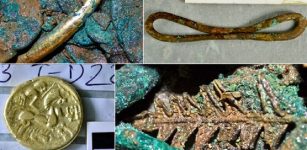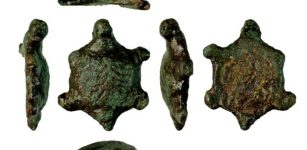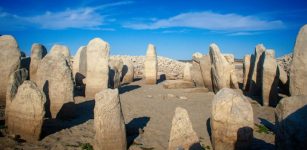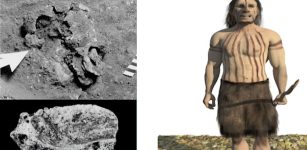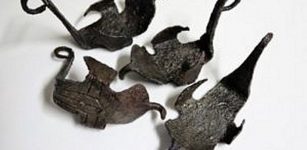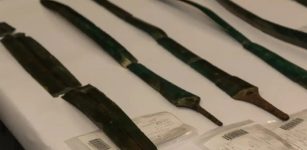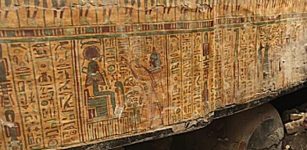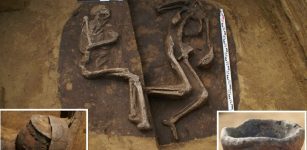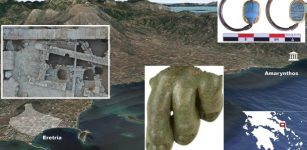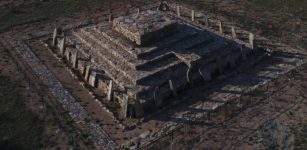2,000-Year-Old Aramaic Inscription Unearthed Near Jerusalem
AncientPages.com - BreakingIsraelNews reports that the oldest - 2,000-year-old Aramaic stone inscription with the full spelling of Jerusalem, Yerushalayim, as it is written in Hebrew today – has been discovered workers during digging works in the vicinity of Binyanei Ha'Uma, the Jerusalem International Convention Center.
The inscription, reads “Hananiah son of Dodalos of Jerusalem,” was found on a limestone column drum that was reused in a later Roman structure.
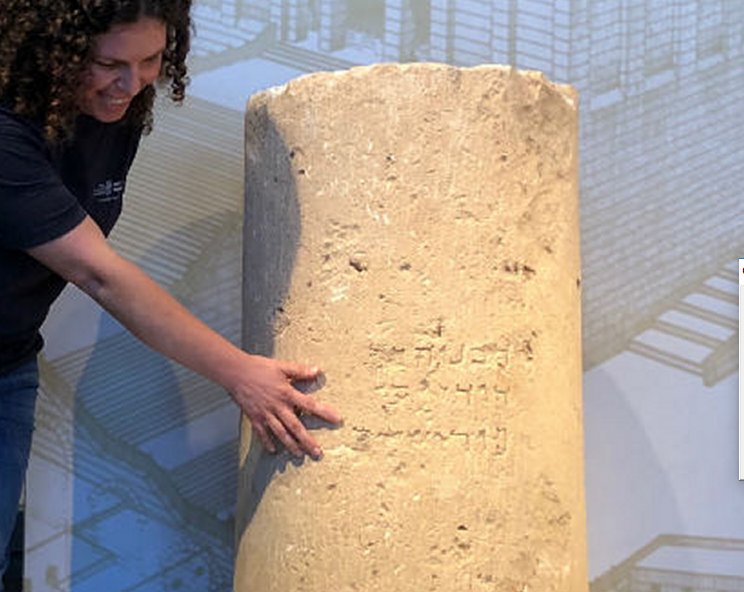
Israel Antiquities Authority Excavation Director Danit Levy presents the Second Temple Period inscription. (Credit: Eliana Rudee/Breaking Israel News)
“First and Second Temple period inscriptions mentioning Jerusalem are quite rare, but even more unique is the complete spelling of the name as we know it today, which usually appears in the shorthand version,” Dr. Yuval Baruch, Jerusalem regional archaeologist of the Israel Antiquities Authority, and Professor Ronny Reich of Haifa University, commented the unique find.
“This is the only stone inscription of the Second Temple period known where the full spelling appears. This spelling is only known in one other instance, on a coin of the Great Revolt against the Romans (66-70 CE),” the researchers said.
While Jerusalem is mentioned 660 times in the Hebrew Bible, only five mentions have the full spelling as we know it today, including Jeremiah 26:18, Esther 2:6, 2 Chronicles 25:1, 2 Chronicles 32: 9 and 2 Chronicles 25: 1.
Archaeologists believe that the inscriber, Hananiah, was a Jewish artist-potter who manufactured cooking vessels and sold them to Roman soldiers and Jewish pilgrims on the way to the Second Temple, especially during the Jewish pilgrim festivals of Passover, Shavuot and Sukkot.
According to Baruch, the inscription speaks to the uniqueness of how Hebrew and the Jewish culture has been preserved from ancient times until today.
“In the Second Temple period, most of people living in Jerusalem were Jewish. It was a Temple city – the only place for Jews to worship. There was no synagogue or Yeshiva – there was only the Temple,” he told Breaking Israel News.
"The city developed into one of the largest cities in the east according to Jewish and Roman historical sources, with its economic basis provided through food, water and most importantly, ceramic tools like ones unearthed near Binyanei Ha’Uma and manufactured by Hananiah, author of the newly discovered inscription.
Baruch also added that artifacts and inscriptions like the one presented today have a direct relation to ancient Jewish cultures, “that give us the understanding of the roots of the Jewish people here in the land of Israel and of course, in Jerusalem.
According to the press release, the site represented the largest produced vessels for Jerusalem for more than 300 years during the Hasmonean Period through the Late Roman era. Jewish ritual baths, kilns, pools for preparing clay, plastered water cisterns and workspaces for drying and storing the vessels were also found in the excavations.
See also:
Biblical Events Confirmed: The Jerusalem’s Wall That Nehemiah Built
Unique 2,700-Year-Old Seal That Belonged To ‘Governor Of The City’ Of Jerusalem Discovered
Evidence Of Babylonian Destruction Of Jerusalem Found At The City of David
Representing the largest pottery production site in Jerusalem of approximately 200 dunams (50 acres), the manufacturing of pottery provided hundreds of thousands of Jewish pilgrims on their way to the Temple – and the hostels that housed them – with cooking vessels. The site was likely chosen due to its proximity to water and material sources for ceramics, trees to burn for kilns and the main road leading to the Temple.
According to Dudy Mevorach, chief curator of archaeology at the Israel Museum, after the Roman conquest and destruction of Jerusalem in 70 CE, the potter’s workshop resumed its activities on a smaller scale until the early 2nd Century CE when the Roman 10th Legion established a factory on the site for the mass production of construction materials, typical of the Roman army.
Mevorach noted that it is interesting that the Hananiah son of Dodalos – likely an artist-potter and son of an artist-potter – found it meaningful to note his origin, Jerusalem, as part of his family name, as his village was very close to the city.
Hananiah’s father’s name, Dodalos, is based on the name of the mythological Greek artist Daedalos – his name may have been a nickname alluding to the father’s artistic abilities.
“The stone was perhaps a dedication inscription or a way to market his craft,” he said at the press conference.
AncientPages.com





